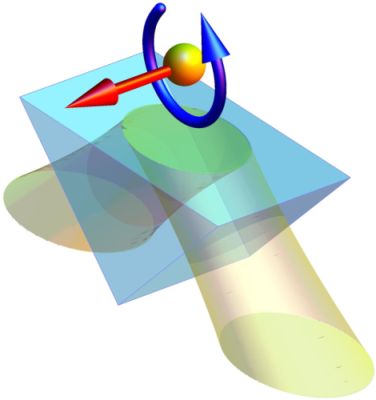Dynamical properties of light have been consistent and very well accepted ‘fact’ amongst the academia of physics since more than a century. The same conviction has also helped in the understanding of electromagnetic radiation, which suggests that a quantum of light carries momentum in the direction of propagation and secondly a spinning or gyrating effect around the propagation axis. These two characteristics have become the basic tenets of daily occurrences and experimental interactions between light and matter.
However, a new form of light called the evanescent waves has emerged having an altogether different outlook with respect to the conventional accepted belief of properties of light. Konstantin Bliokh, Aleksandr Bekshaev and Franco Nori both from RIKEN, Japan have been credited for the discovery.
What are evanescent waves?
While traveling along a particular direction, when a wave attenuates along a different direction it’s called an evanescent wave. However, it can propagate well along its interface but causes decay upon hitting second medium.
Upon studying the dynamic characteristics of evanescent waves, the team of researchers found that the transverse components of waves’ momentum and spin feature, which happen to exist at the right angles to the plane of propagation. Along with it, they also discovered that momentum perpendicular to the direction of the motion is being determined by the wave’s circular polarization. In normal light, the transverse spin is determined by the wave’s circular polarization.
The newly discovered properties are very much different from the conventional principle on which photons work, claimed Bliokh.
Demonstration by the team suggests that evanescent waves exhibits such varied properties during light–matter interactions, characteristics which otherwise are not achievable using normal beam of light. For instance, as per the above diagram, transverse force and a transverse torque is applied by an evanescent wave upon small particle, where force is proportional to the circular polarization but the torque is not.
Source: RIKEN




